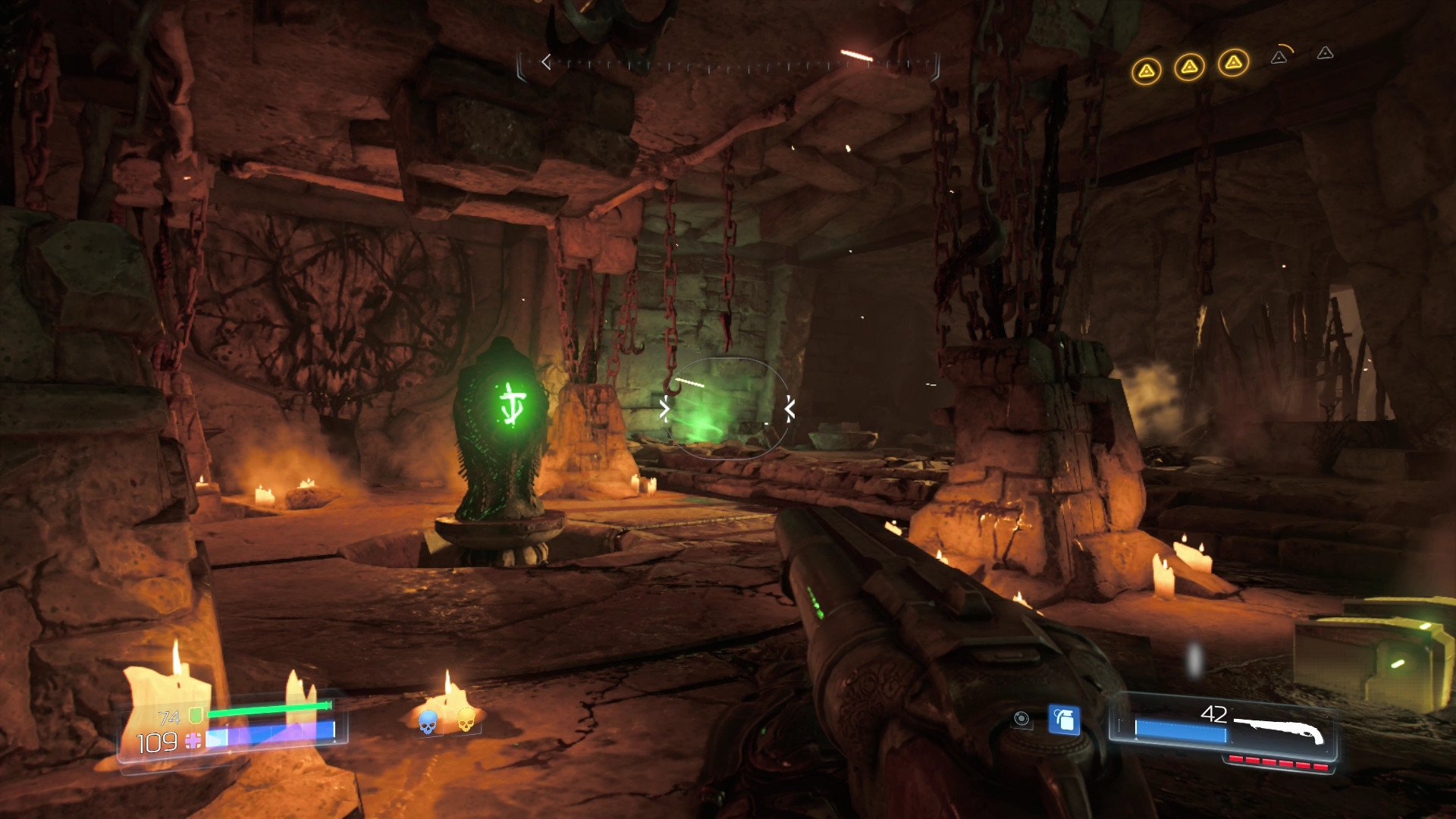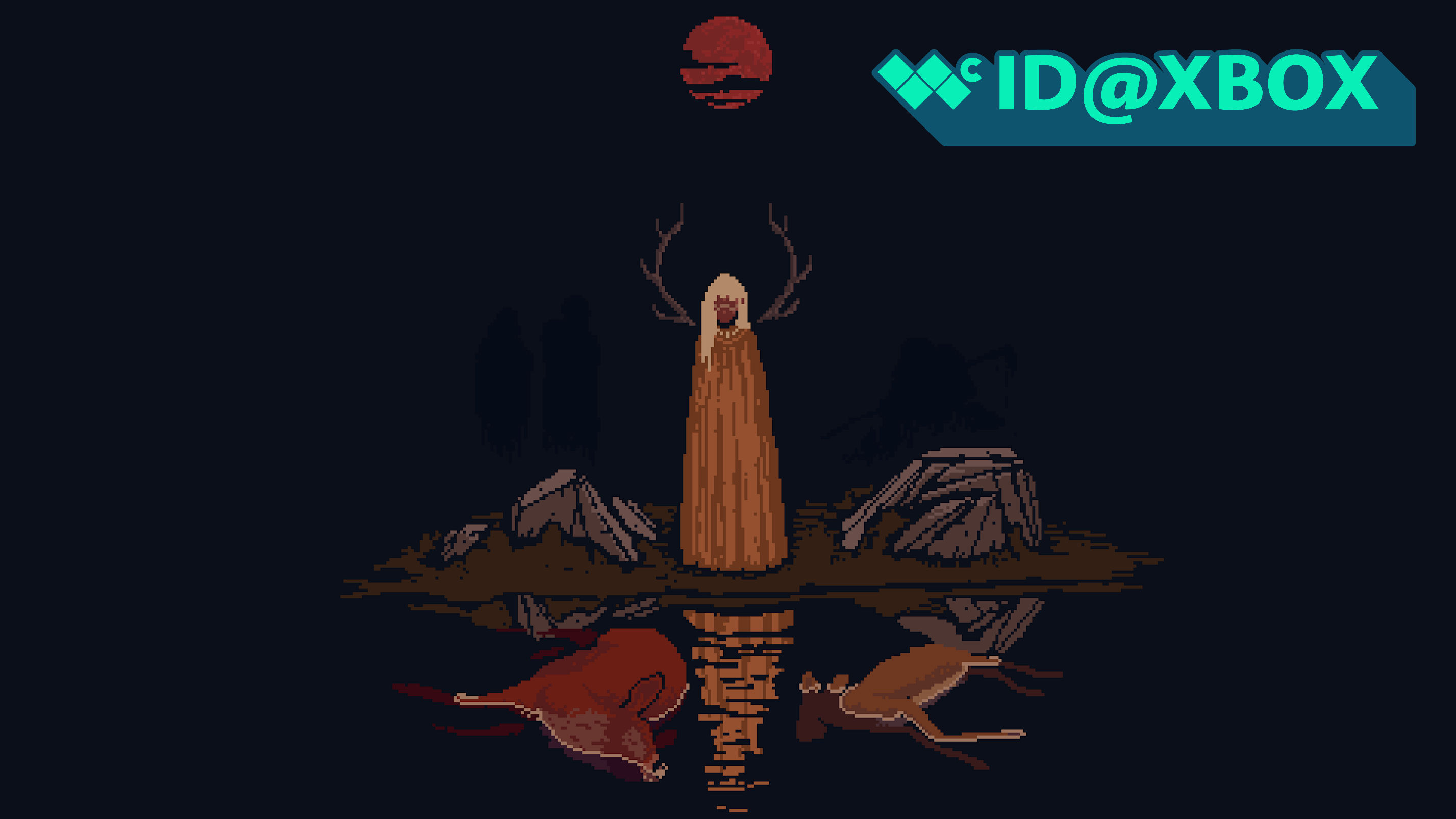
When a franchise is as revered as DOOM, expectations for a reboot were always going to be on the low end. DOOM has been incubating for the best part of a decade, announced initially for the Xbox 360 and PC back in 2008. The legendary id Software has seen significant changes over the course of the game's development: the departure of co-founder John Carmack, and the studio's acquisition under Bethesda Softworks, the company behind Fallout and The Elder Scrolls. DOOM's development certainly had its troubles as a result.
In 2013, it was revealed that DOOM 4 was languishing in development hell, with id Software's own Tim Willits describing their initial efforts as lacking soul. Bethesda went on to reboot the entire project – leading to speculation about whether or not the game would ever see the light of day.

In 2014, Bethesda showed off the first ultra-violent footage of DOOM, now dubbed as a reboot, to widespread praise. Some outlets decried the trailer's violence, forcing Bethesda marketing chief to remind everyone exactly what DOOM represents: "If you're not into violent, bloody games – DOOM's probably not a game for you." And it's that sentiment permeates DOOM's 2016 reboot.
id Software has masterfully tamed the essence of DOOM, elevating it with some modern flare, new mechanics, wrapping it in an intriguing, almost metaphysical new plot direction. Frankly, if you're a fan of first person shooters of any sort, I'll save you a few minutes: stop reading this review right now, and go and purchase DOOM.
Brutal beauty
Visuals, Audio and Story
Before we get into the meat of DOOM's gameplay, let's talk about its violent visuals. DOOM runs at a buttery smooth 60 frames per second on Xbox One – and while that's imperative for the game's blistering combat speed and fluidity – it's not without sacrifices.
DOOM won't win any prizes for texture quality on consoles. Beyond the notorious id engine texture popping, certain models and features have very low fidelity, presumably to ensure the frame rate remains high. Textures also get phased to lower resolution if they're at the periphery of your screen and then pop back in afterward. If it's a necessary consequence of maintaining 60 frames per second, given DOOM's pulsating, fast-paced gameplay, I welcome it, but graphics aficionados might want to try DOOM on a higher-end Windows PC to experience the game's full visual capabilities.
All the latest news, reviews, and guides for Windows and Xbox diehards.
Texture popping aside, when it comes to DOOM's enemy demons, weapons and characters, it is fist-poundingly triumphant. DOOM's vast arsenal of weaponry is as detailed as they are varied, shimmering in the game's moody, dynamic lighting.
DOOM's hellish menagerie of creatures is perhaps even more iconic than its weapons. From the ominous floating Cacodemons to the vicious, rocket spamming Revenants – each demon offers players multiple attacks and grisly glory kill animations to stave off repetition.
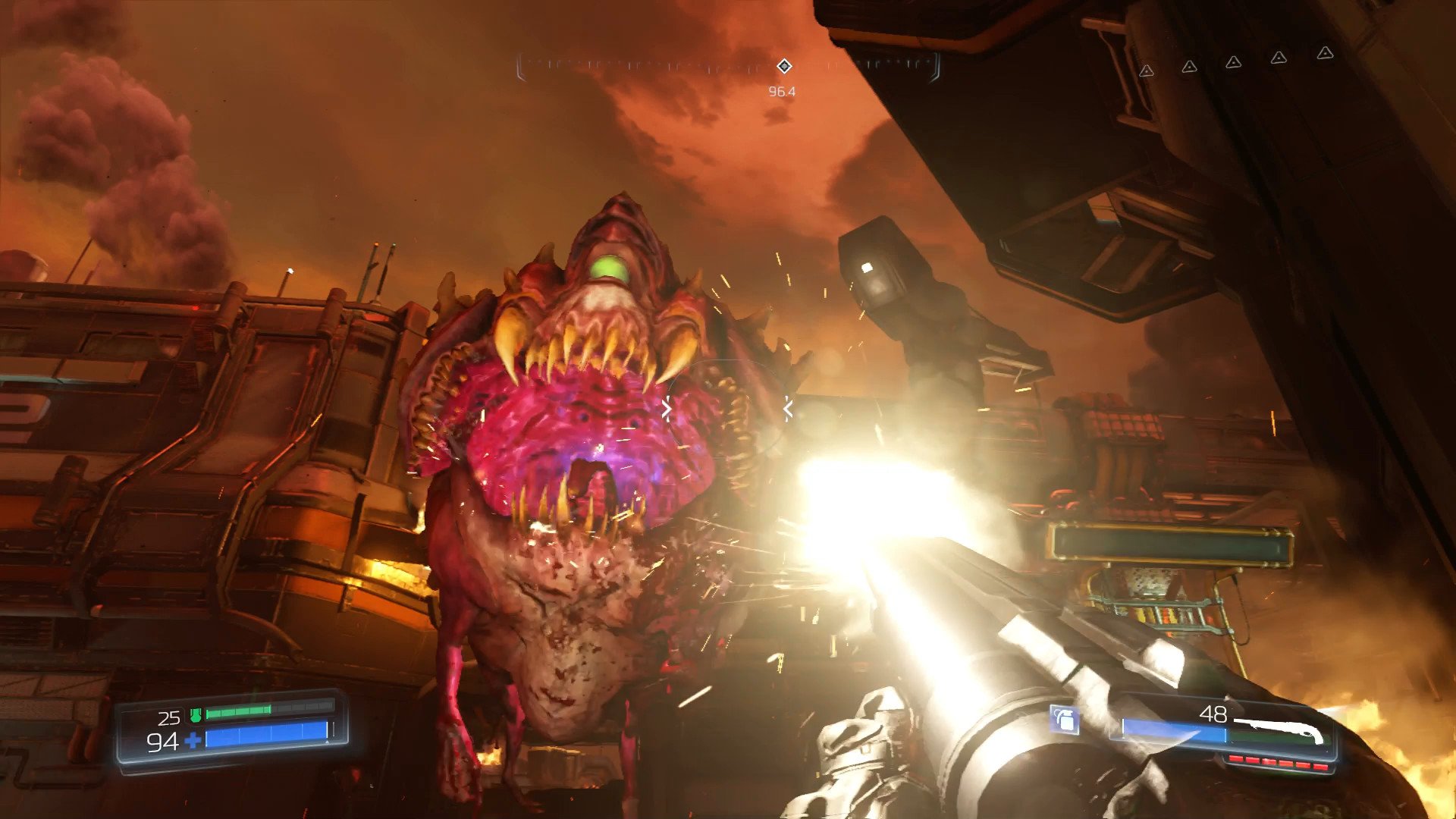
Thundering industrial and death metal tracks accompany your battles, transforming combat into a gory moshpit.
Not only do the weapons and demons look great, but they also sound utterly incredible, each like the distinct section of a weaponized orchestra. The turret firing mode of the Chaingun screams like an electric guitar riff as it rips through enemies, who explode into glistening mounds of soaked, layered flesh. You can feel the pulse of the Gauss Rifle as it finds its targets, and every explosive in the game produces clouds of meaty chunks that spread crimson paint on every surface.
DOOM's violence is a work of art, unrelenting, and harmoniously feeds the gameplay with a sense of reactive, visceral impact. When you see some of the more powerful demon types, you know you're in for a rough time.
Beyond DOOM's visuals, id Software commissioned Killer Instinct composer Mick Gordon to create the game's music, and their choice was right on the money – DOOM features one of the best video game soundtracks you'll ever hear. The iconic E1M1 riff has evolved into all-new, thundering industrial and death metal tracks accompany your battles, transforming combat into a gory mosh pit. Sadly, not all of DOOM's elements are this creative.
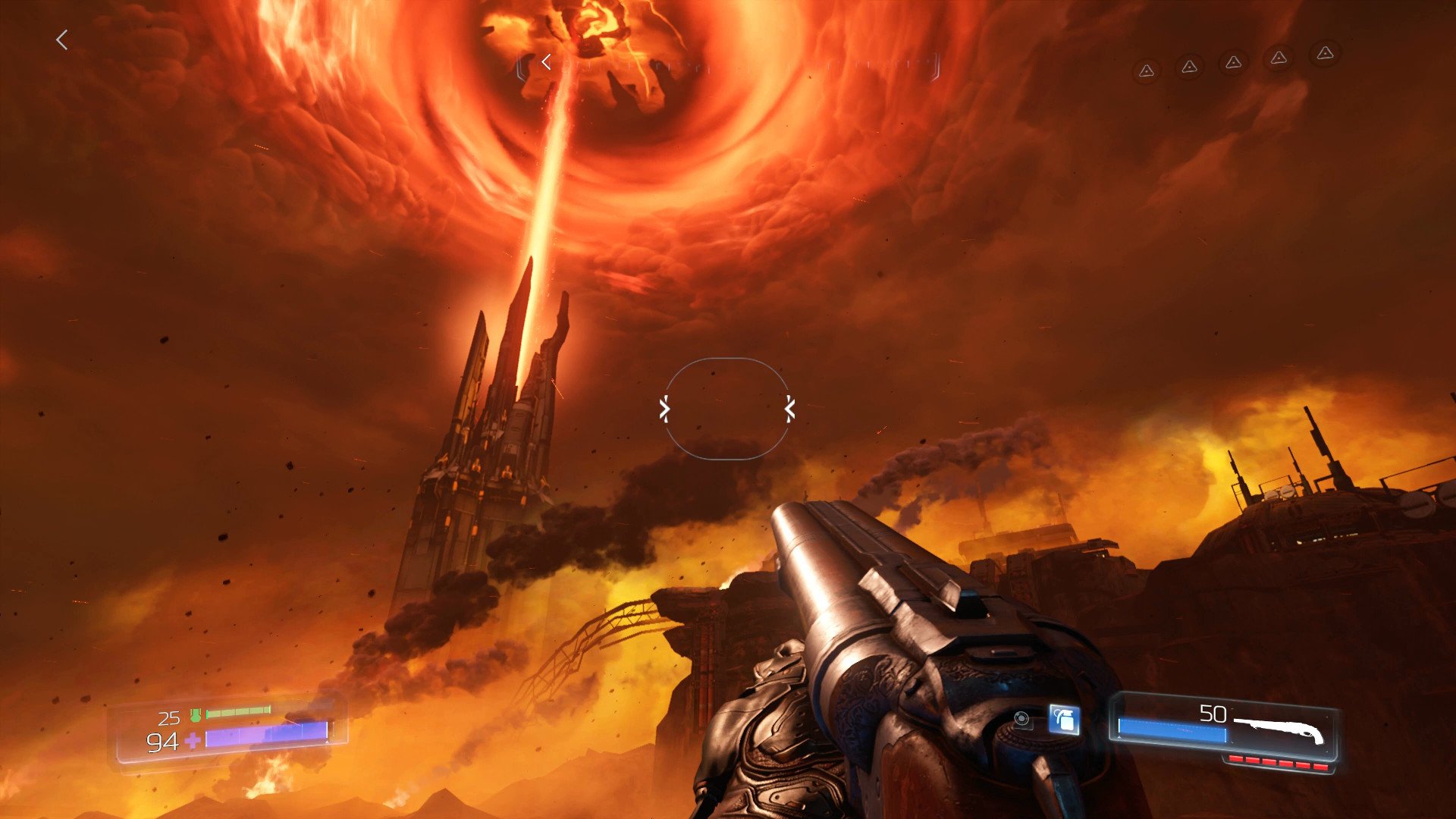
While DOOM's gameplay usually takes your full attention, I feel like its location designs could've been a little more imaginative. If you've played DOOM 3, it's almost like traversing through the same locations again in HD (and with the lights turned on). UAC facilities, fire-blasted Hellscapes, ancient catacombs, often with the same gore-spattered art assets, present themselves multiple times. There are some majestic vistas, and the locations are very detailed, but it feels a little like the studio restricted themselves to concepts seen in the previous DOOM games. There are other titles out there that take the idea of Hell and have been far more ambitious with it, such as the Xbox 360's Dante's Inferno and DarkSiders.
There are multiple paths to complete objectives, and id Software went all out to cram DOOM with hundreds of secrets.
While the location's art direction isn't particularly unique, the level layouts are a welcome throwback to an era of FPS exploration. There are multiple paths to complete objectives, and id Software went all out to cram DOOM with hundreds of secrets that reward the inquisitive gamer. It'll be the same inquisitive gamer that gets the most out of DOOM's story.
Bethesda and id Software were vocal about putting DOOM's story in the background, and it recaptures the gameplay focused-essence of the franchise. There aren't a great deal of cinematic cut-scenes or dialogue sequences throughout DOOM, but id Software manage to convey a surprising amount of personality through their famously silent protagonist. DOOM guy communicates through his rage-fuelled behavior, marvelling at newly discovered weapons, ripping doors off their hinges instead of using the handles, and even by handing the game's cute upgrade robots a merciless beating after taking their wares. This guy is angry and mean.
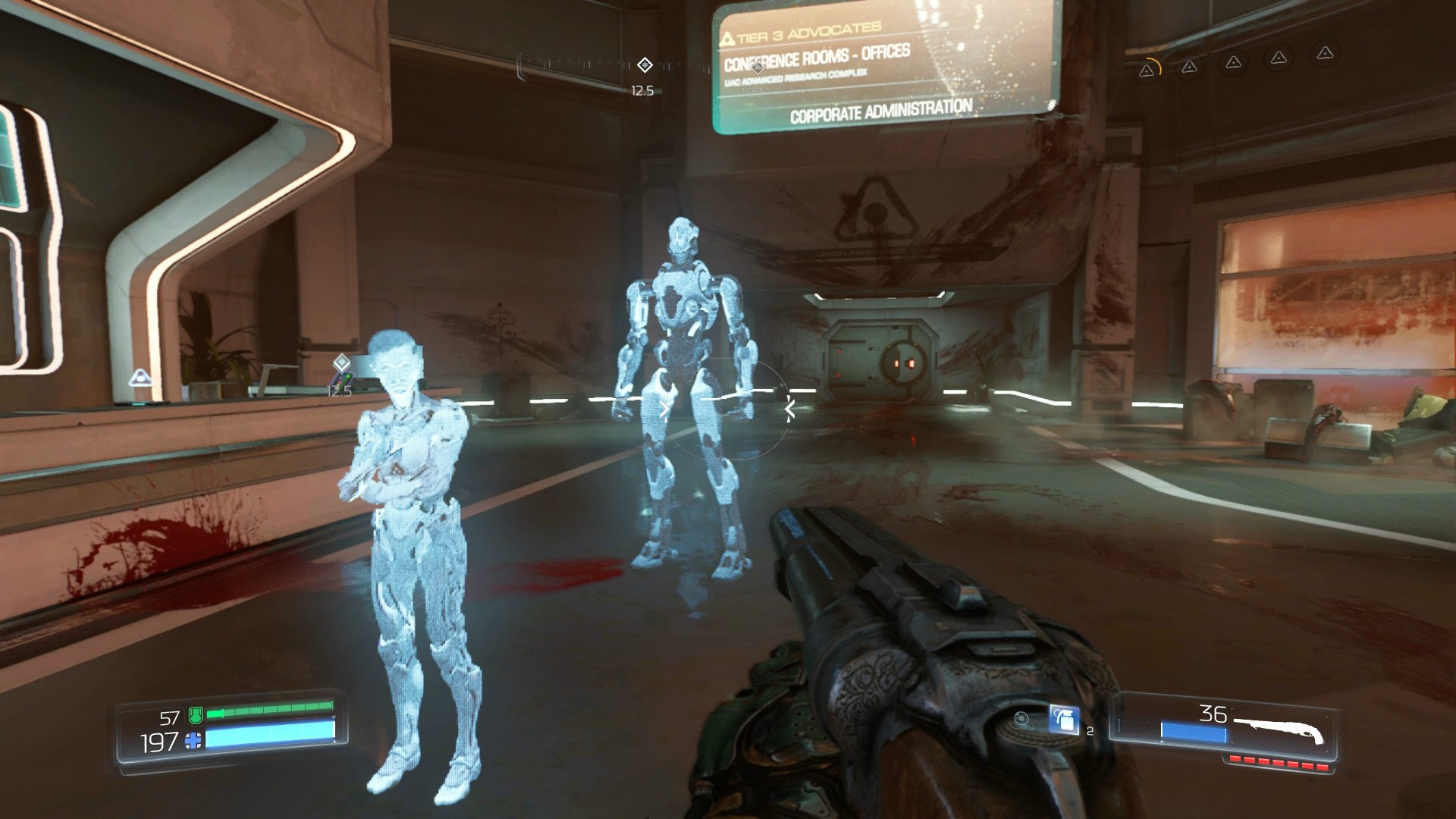
id Software has put a clever, almost ironic twist on the game's own legends.
DOOM guy, or, the 'DOOM Marine' as he's known in-game, awakens deep in the belly of a research laboratory on Mars. It appears that both he and his signature space marine suit were artifacts discovered in a Martian archaeological dig, which also unearthed a bridge between our dimension and Hell.
Naturally, the arrogant UAC Corporation believed it could tame the energies of Hell, exploiting it to create a golden age of technical advancement. Of course, it all went horribly wrong.
DOOM guy immediately sets about on his bloody mission – destroying demons – while ignoring the radio pleas of the company's surviving executive to leave the facilities intact. UAC's Samuel Hayden, a General Grievous-like cyborg, guides the player through the game, explaining what must be done to seal the gateway to Hell.
Without spoiling, the game tells a fairly straightforward plot that long-time DOOM fans will be familiar with, but when combined with the game's collectible and detailed lore text logs, it seems that id Software has put a clever, almost ironic twist on the game's own legends that I can't praise enough.
When you combine the game's raw, gory atmosphere with its elevating musical treatment, DOOM becomes a game you can judge by its cover. Brutal, and straight to the sharp, jagged point.
Rip and Tear
Gameplay
As near-perfect as DOOM's audiovisual rebirth is, that was perhaps the easier task laid out before the studio. Recapturing the essence of what makes DOOM, well, DOOM, while navigating modern gamer's expectations and the pressure of achieving triple-A success, sounds like it was a complicated process, especially given the troubled development cycle. Thankfully, it was more than worth the wait.
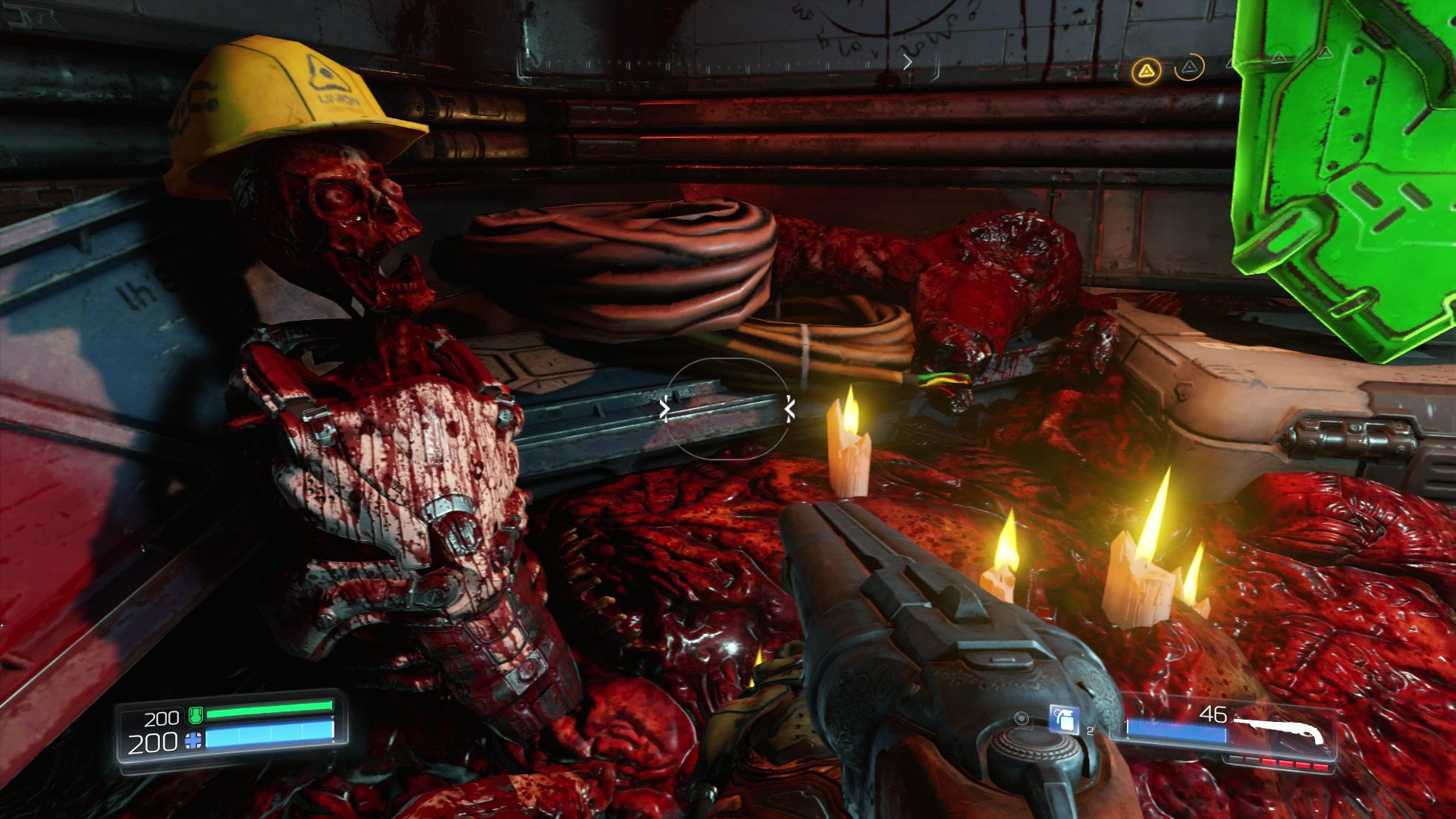
DOOM is a pure first person shooter, and throughout its meaty, 15-to-20 hour campaign on 'hard' Ultra-Violence difficulty, id Software very rarely take control away from the character. The result is pure gameplay; no padding, no filler – and the way id Software drip feeds new weapons, new demons, and new level layouts ensures that the game remains fresh throughout the Marine's bloody mission. With memories of the flawed RAGE firmly behind it, id Software has played to its strengths with DOOM and produced something that stomped my cynicism into a bloody paste.
You begin with a lowly, inaccurate pistol, and over the course of the campaign, you'll end up wielding a triple barrelled Chaingun, a demon-liquefying Gauss Rifle, and of course, DOOM's iconic double barrelled Super Shotgun. Each weapon has its strengths and weaknesses, and part of the joy of DOOM's frantic campaign combat is figuring out what weapons to use for each situation and each demon.
DOOM's campaign areas each come with a subset of platforming challenges, pre-defined waves of demon spawns and static health and ammo pickups. On the higher difficulties, DOOM almost becomes a blisteringly reactive puzzle game, as you'll be required to alter your tactics continuously to respond to the game's varied and violent hazards.
Cacodemon's drift from above, launching huge fireballs, while Hell Knights consistently rush, leap and pound in your direction. Mancubus demons wield flame throwers, area attacks, will punch you at close range, and the iconic Revenants hover above the ground, spamming rockets before trying to claw your eyes out. Often, there can be anything up to ten different types of demons all chasing, firing and biting, Hell-bent on ending DOOM guy's brutal life. Even dying in DOOM is a spectacular affair.
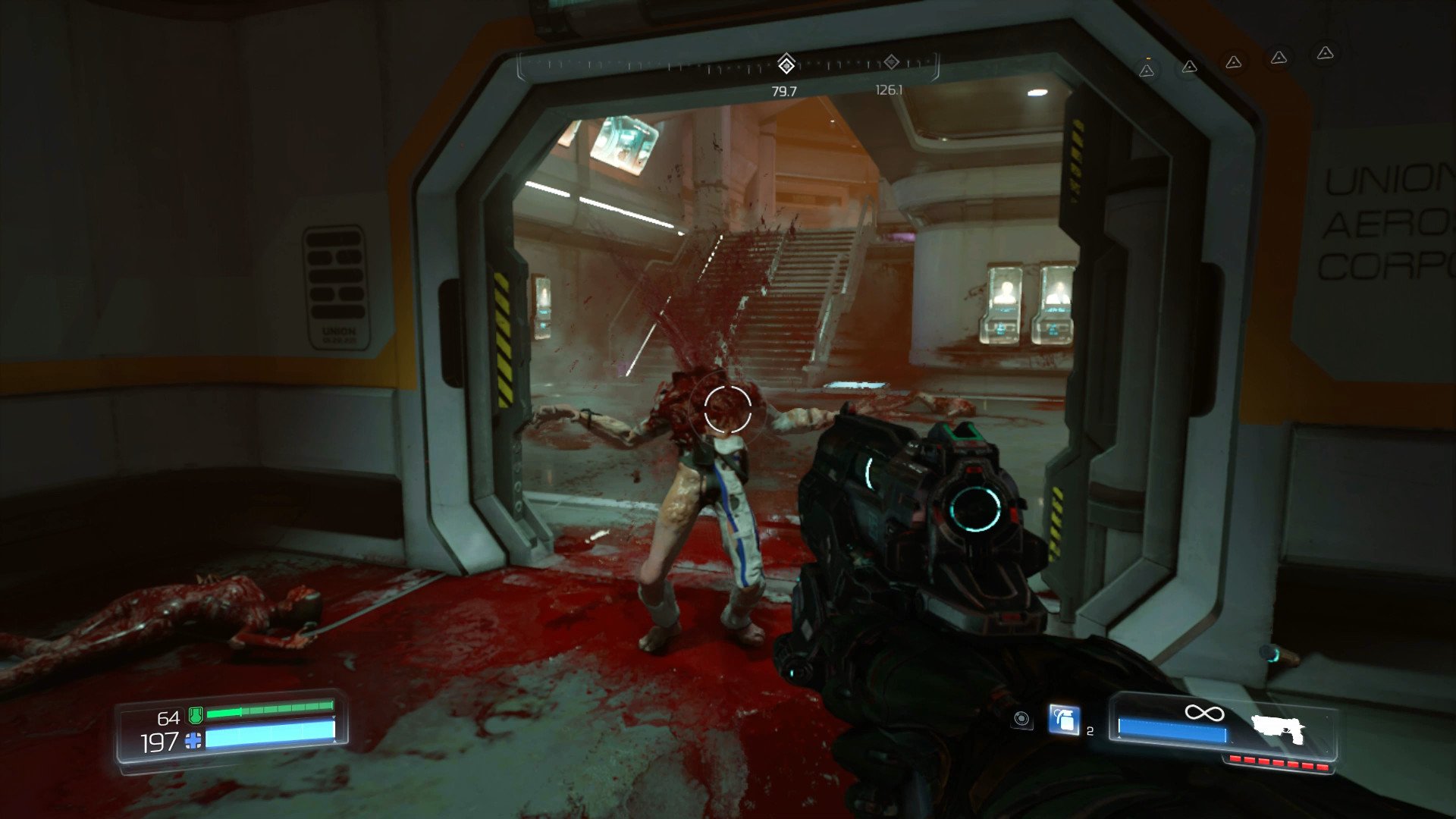
With narrative brushed aside into text-based (but interesting) codex entries, DOOM puts its playable butchery front and center. Beyond its frenetic and fluid shooting, DOOM weaves melee combat deeply into the game's strategic elements, confidently side-stepping any accusations of being a needlessly violent gimmick.
Some of the battles in the game's final levels were some of the most exciting first-person shooting sequences I've yet to experience.
At low health, enemies will become staggered, allowing for a goretastic melee kill. There is no regenerating health, and performing executions grants you small health boosts, which can be crucial. It adds a strategic element to the run 'n gun paradigm, not only forcing you to stay close to the action – but also to change your tactics and target weaker enemies at desperate moments for those small health gains. DOOM's returning chainsaw serves a similar purpose, granting an instant kill and ammunition instead of health, but at the cost of fuel, which is a scarce resource.
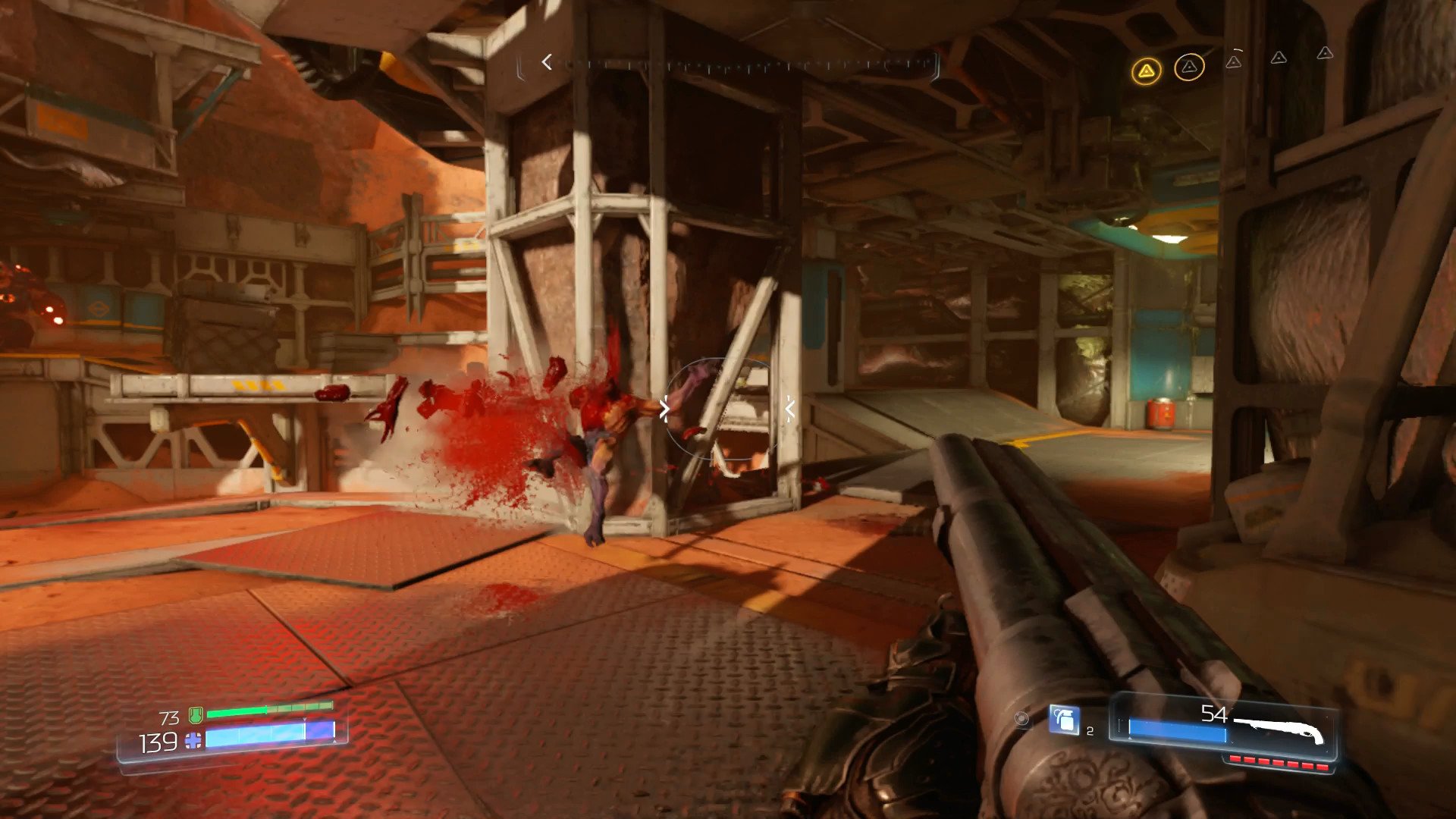
Vitally, utilizing those melee executions doesn't interrupt the flow of DOOM's fast-paced, strafe-heavy combat. Additionally, seeing the same melee execution over and over could've been repetitive, but most enemies have around five different variants depending on where you're targeting and moving, and some levels even feature challenges for performing glory kills in a certain way.
Speaking of which, DOOM indeed features a modernized unlock system, allowing you to develop your DOOM Marine's arsenal and defenses, and customize your experience with quality-of-life improvements – such as revealing the general location of some of the game's secrets, or becoming immune to explosive barrel damage. Unlike other games that feature an unlock system, you'll never get to a point where you feel overpowered, as the game progressively gets more complex and challenging with its gated demon spawning. Some of the battles in the game's final levels were some of the most exciting first-person shooting sequences I've ever experienced.
Of course, DOOM isn't just about the campaign. It also features a comprehensive competitive multiplayer component, as well as a community-driven creation tool called Snapmap, which allows you to create custom game modes and challenges using the game's assets, adding a bulk of additional value to the overall package.
I wrote in my beta impressions that DOOM's multiplayer mode was fun, but an ultimately flawed visit to the arena shooters of yore. The release version of DOOM, developed by former Halo developers at Certain Affinity, has made big strides towards repairing some of the problems I found when it came to weapon balance. As a result, DOOM's multiplayer is a surprisingly competent addition to the overall package.
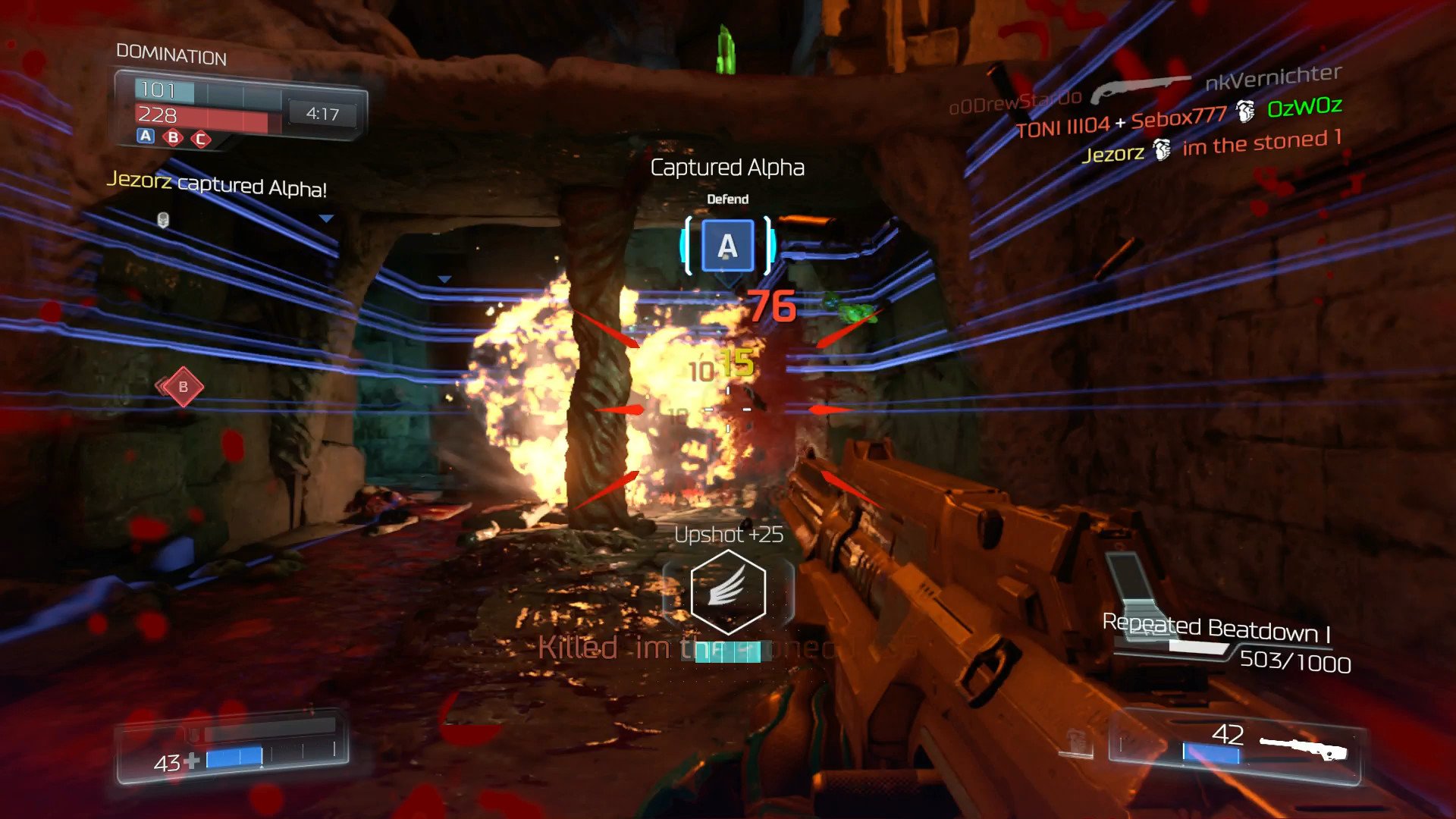
Like a typical old-school arena shooter, DOOM has no regenerating hit points. Health, armor, and ammo must be acquired on-site, and the best players are the ones who learn where these items spawn, navigating around maps in such a way that health kits are never far from reach. Ditching regenerating health forces players to move continuously around the map, doing away with camping. I also find DOOM's spawn system to be far more intelligent than some shooters – I can't think of an instance where I've spawned and gotten immediately shot in the back.
DOOM's multiplayer packs all of the standard multiplayer archetypes — team death match, point capture, and so on — but each mode has an additional spin due to the game's demon possession mechanics.
Beyond standard pickups, DOOM's multiplayer also features power-ups, often on longer respawn timers. Some of these include quad damage, invisibility and haste, others include powerful weapons like the Gauss Rifle or Chainsaw. None of these are as interesting as the game's demonic runes, however.
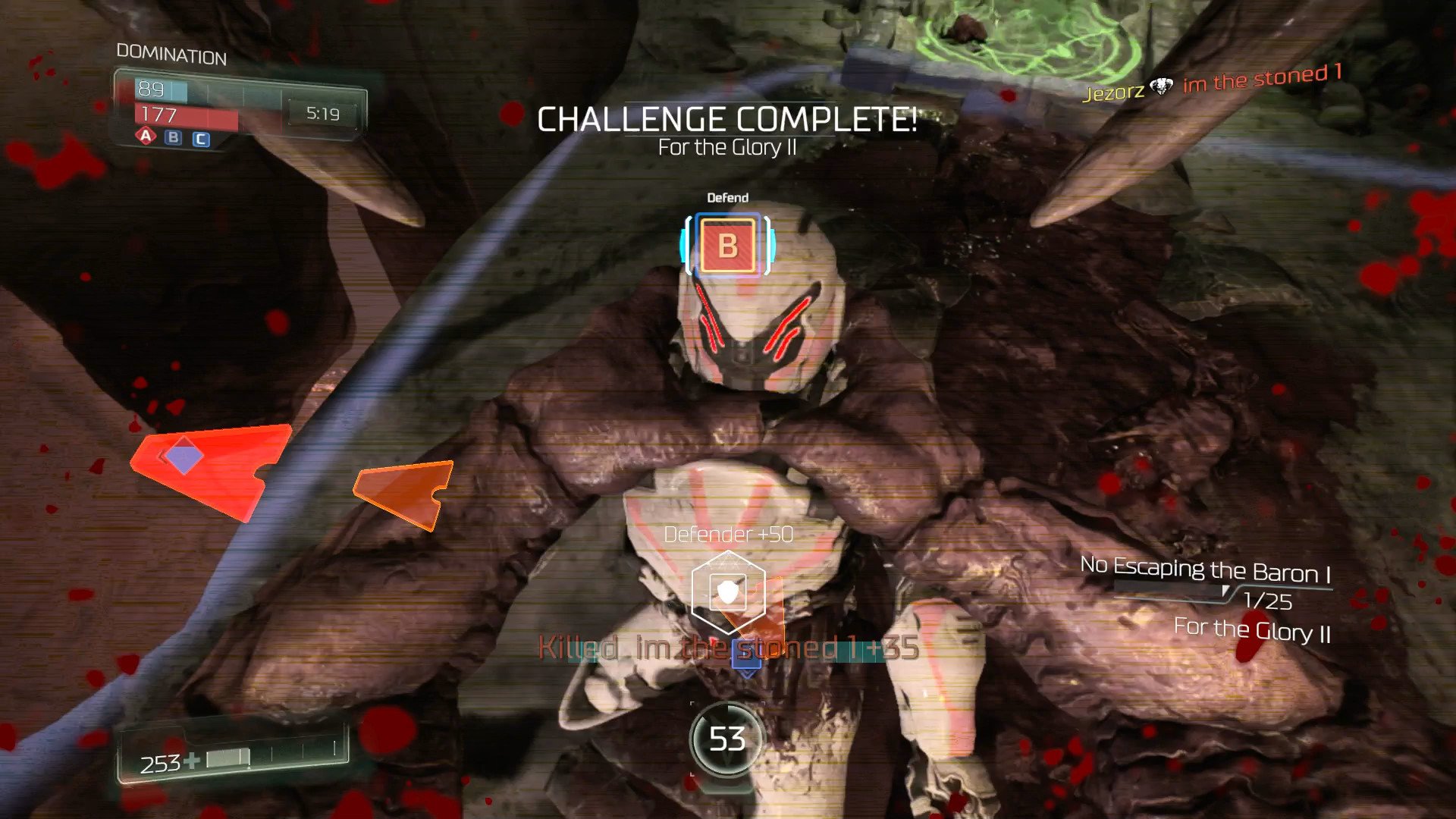
Players who pickup a rune (or glory kill an existing demon) will transform into one of the game's signature Hell creatures, with all new powers, health and abilities. The game announces when demons spawn, and it totally alters the flow of battle. Demons gain access to instakill abilities, making head-to-head combat with them a thoroughly bad idea, but a couple of co-ordinated players can very quickly focus-fire them down —particularly if they're wielding power-ups or spawned weapons themselves. Some might find being killed by a demonic player unfair or frustrating, but it's tons of fun when you're in the driving seat.
DOOM's penchant for gore carries over into the multiplayer, granting hilarious and humiliating glory kills against enemy players and demons. Like Halo's executions, DOOM's glory kill animations can leave you wide open and defenseless, unlike the invincibility frames they give you in the campaign, forcing players to make smart decisions about whether or not to kick someone's head off.
The map designs again suffer from a similar lack of creativity when it comes to art, but the layouts make battles interesting and varied. I complained previously that the limited beta maps were overly claustrophobic, giving the Super Shotgun an edge in almost every situation. The full game has a decent spread of environments, which allows for other standard weapons to shine in different situations.
There's a surprising amount of satisfaction to be found in DOOM's multiplayer if you're willing to either adjust or re-acquaint yourself with the dynamics of its old-school sensibilities – and the piles of unlockable cosmetic items and loadout weapons gives multiplayer an addictive edge.
DOOMTASTIC
Conclusion
DOOM allows you to become the main character of your own personal gory action movie; the conductor of an unholy, death metal symphony. As you vault and explore vantage points, as you blast demons mid-air as you leap down and stomp on demonic brains.
The combination of fluid shooting, unobtrusive and contextual melee glory kills and the game's old school attitudes to exploration and uncontaminated gameplay give DOOM a sense of purity we haven't seen from the genre since Wolfenstein: The New Order. This fact should prove that id and Bethesda have excavated the long-dormant essence of the traditional shooter.
Pros:
- Incredible, fluid FPS action
- Huge maps, crammed with opportunities for exploration
- Lengthy, gameplay driven campaign bereft of filler
- Gratifying multiplayer arena combat
Cons:
- Location art could've been more ambitious and creative
There's an innocence about DOOM – which might seem like a weird way to describe a game about disemboweling demons – but it beautifully harkens back to an era where games were unashamed to simply be games. I think DOOM might be the most exhilarating experience I've had with a first person shooter on Xbox One, maybe ever. Do yourself a favor and buy it.
This review was conducted on Xbox One using a copy purchased by the reviewer.

Jez Corden is the Executive Editor at Windows Central, focusing primarily on all things Xbox and gaming. Jez is known for breaking exclusive news and analysis as relates to the Microsoft ecosystem while being powered by tea. Follow on Twitter (X) and tune in to the XB2 Podcast, all about, you guessed it, Xbox!
